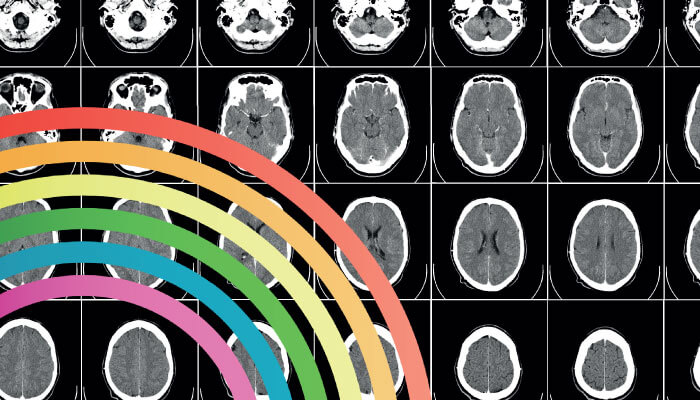
One in three patients will experience vision loss after a stroke. While some spontaneously recover their sight, the vast majority are left with some degree of permanent visual deficit. There are currently no tried-and-tested strategies to encourage functional recovery – but there is hope. A team at the University of Rochester has found a new way of identifying which areas of the visual field remain active following a stroke – paving the way for a potential recovery strategy.
The study involved 15 patients who had experienced a stroke in the primary visual cortex. To establish which areas of their brain remained active, participants spent an hour in the MRI scanner looking at flickering images while their eye position was monitored. The team compared the level of brain activity elicited by a given stimulus on the screen to the level of brain activity when nothing was shown, allowing them to map the cortical visual processing areas of the brain.
“The organization of the visual system is highly stereotyped, meaning we can objectively quantify visual ability in a nuanced and precise fashion,” says Colleen Schneider, lead author of the paper. “This made it easier for us to relate changes in the organization of the brain to changes in patient’s functional recovery over time.”
The researchers found that the survival of retinal ganglion cells in the eye depended upon whether the primary visual area of the brain to which they are connected remained active. “Sometimes, patients’ brains would be active for stimuli presented in areas of their visual field that were known to be blind after the stroke,” says Schneider. “In other words, the patient would say they didn’t see anything, but their brain activity told a different story.”
By testing patients again after 6 months, the team were able to show that activity in the visual cortex predicted survival of corresponding retinal ganglion cells – even if the patient was blind in that region of the visual field.
So how do these findings translate to life outside the lab? “Clinicians could use a simple, non-invasive photograph of the back of the eye to gain insight into the integrity of cortical visual processing areas,” says Schneider. “Based on the information that is gained from the OCT image, rehabilitation specialists could tailor their visual retraining therapy to regions of the blind field that are most likely to respond to therapy. This would not only save time and resources, but also ensure treatment efforts are directed to areas of the visual field with the highest likelihood of recovery.”
The team’s findings have now become the foundation for a clinical trial investigating how selective serotonin reuptake inhibitors, including anti-depressants like Prozac, help stroke patients with motor impairments recover function. “We think that SSRIs are enhancing neuroplasticity through a mechanism that is independent of their anti-depressant effects,” explains Schneider. “While the exact mechanism is still unclear, basic science studies in animal models suggest that SSRIs reduce the level of inhibition in the brain, which facilitates the rewiring necessary to support functional recovery.”
At present, the chances of a patient achieving full visual recovery are slim: only one in eight patients who experience partial blindness after a stroke recover their vision completely. Schneider says: “We hope that drugs like SSRIs and the development of novel visual rehabilitation techniques will make it possible for more patients to experience better visual recovery in the future.”
References
- C Schneider et al., “Survival of retinal ganglion cells after damage to the occipital lobe in humans is activity dependent”, Proc Biol Sci, 286 (2019). PMID: 30963844.
